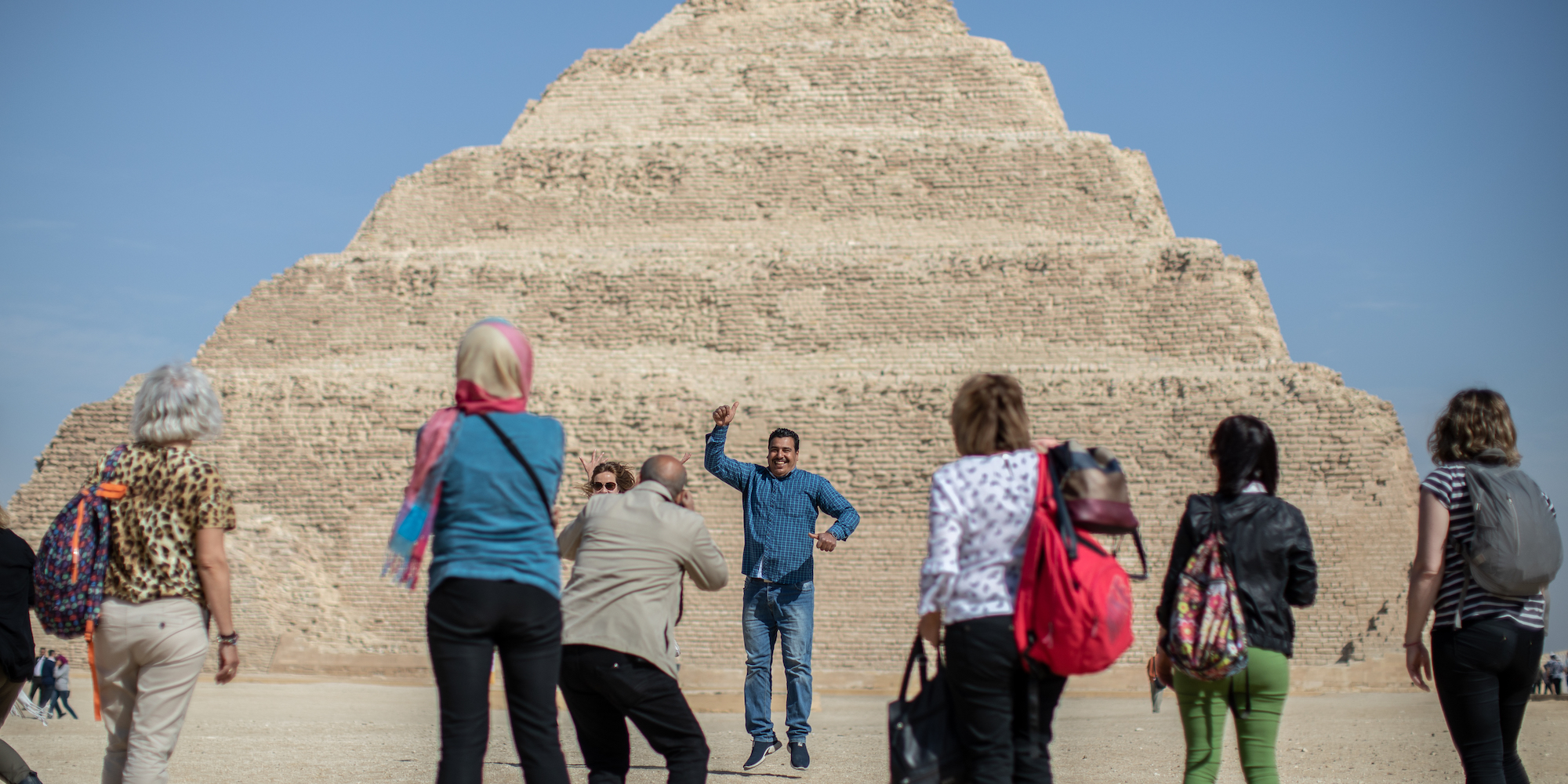- The Pyramid of Djoser, built about 4,600 years ago, to house the tomb of the Pharoah Djoser, has reopened after 14 years of restoration.
- It was crumbling due to neglect, fierce desert winds, and damage sustained by an earthquake in 1992.
- The process took 14 years, including a pause during civil unrest in Egypt. It was complicated by local NGOs that claimed the restoration process had actually damaged it.
- Visit Business Insider’s homepage for more stories.
The first stone pyramid ever built has been restored and is now open to the public.
The Pyramid of Djoser, also known as the Step Pyramid, a UNESCO world heritage site, was reopened on March 5, after a restoration took 14 years and nearly $6.6 million.
An architect named Imhotep designed the pyramid more than 4,600 years ago to house the coffin of Pharoah Djoser. He decided, for the first time, to build up. He devised a new structure made of six layers of stone that got smaller as they ascended. The final product was meant to be a stairway to heaven.
It was the first building ever made of stone, and led the way to Egypt building more famous pyramids, like the Great Pyramid of Giza.
Over centuries its condition deteriorated due to the effects of time, neglect, fierce winds, and serious damage sustained in a 1992 earthquake.
And while fixing a crumbling stone pyramid is difficult, it was delayed for almost two years by Egyptian unrest. The restoration also faced scrutiny by Egyptian NGOs that claimed the work was actually making the pyramid worse.
Here's how the pyramid made history and was given a fresh future.
Less than 20 miles to the south of Cairo, in Egypt's former capital Memphis, stands one the oldest pyramids in the world — the Step Pyramid of Djoser, also known as Zoser.
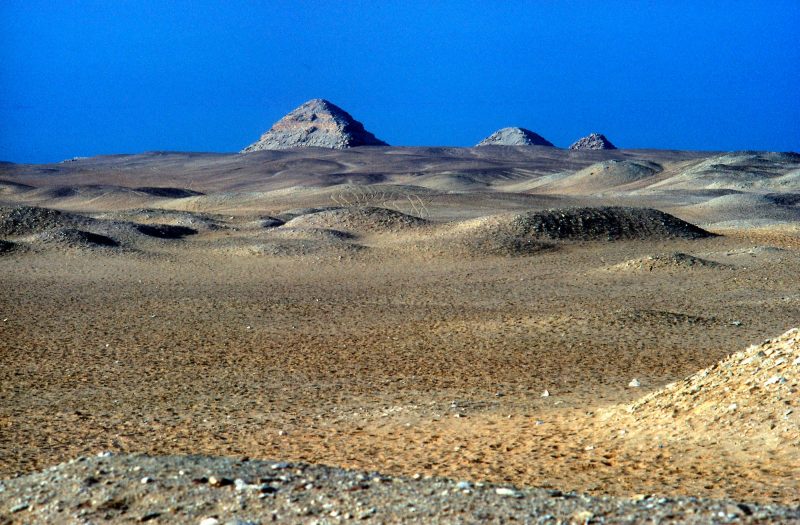
Sources: The Guardian, Washington Post
Djoser was built about 4,600 years ago, between 2667 and 2648 BC, and is the oldest large-scale stone monument still standing. According to the Los Angeles Times, the shimmering pyramid takes viewers' breath away, and that was the point.
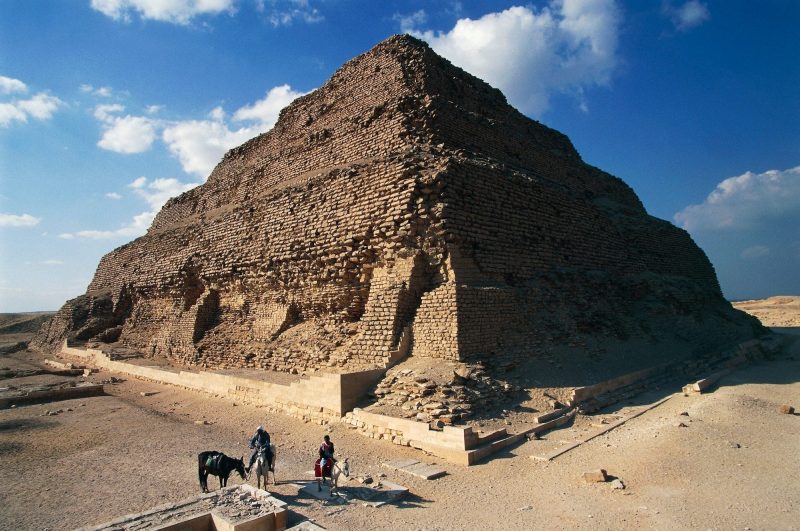
Sources: The Guardian, Los Angeles Times, AP News
It's situated in the Saqqara necropolis, which is the largest pyramid-related funerary complex in the world.
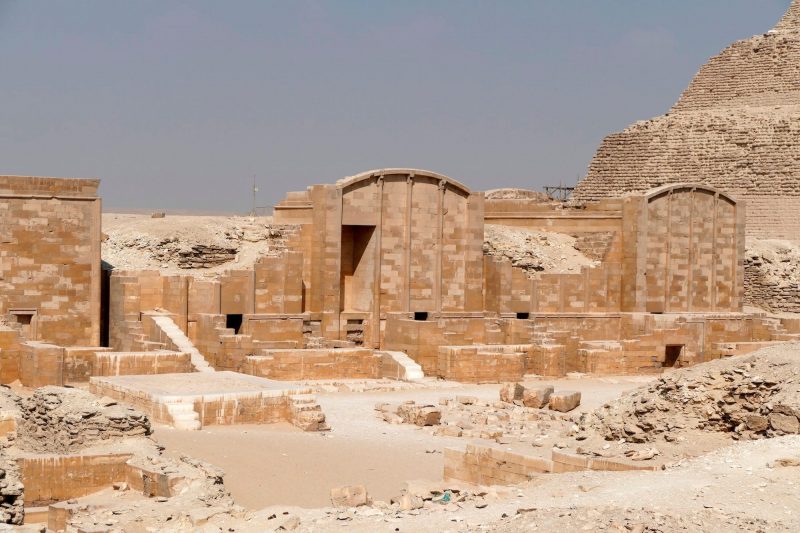
Source: Reuters
While the Great Pyramid of Giza is more famous, and the pyramids at Dahshur are bigger, they might never have existed had it not been for Djoser.
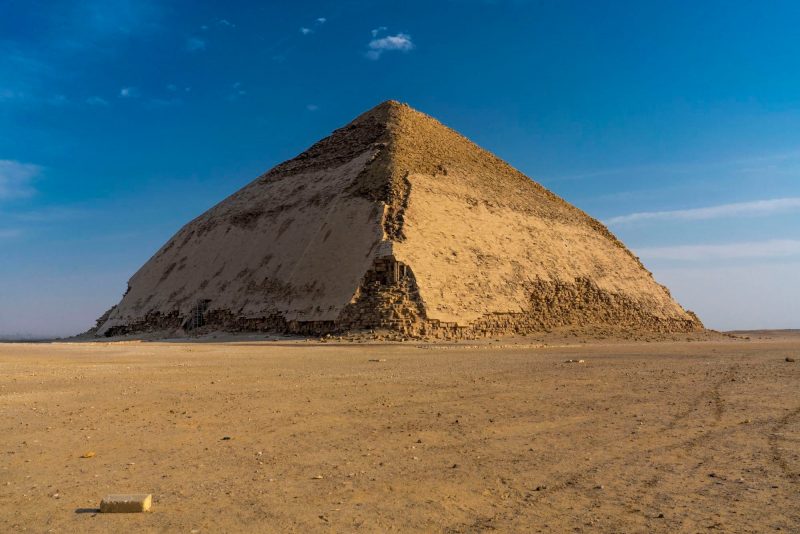
Source: The Guardian
The pyramid was built for Egyptian Pharoah Djoser, who ruled for 19 years during Ancient Egypt's Third Dynasty. Before him, pharaohs were buried in tombs made of rectangular mud-brick slabs. But Djoser got something grander.

Sources: The Guardian, BBC, Reuters
The pyramid was designed by his chief architect named Imhotep, possibly the world's first architect. Imhotep came up with a novel idea — build up. He decided to use six layers that got smaller as they ascended. And it formed, according to BBC, "a stairway to heaven."

Sources: Smithsonian, BBC, Reuters
It's about 200 feet high — tall enough to make the Pharaoh's ascent into heaven easier.
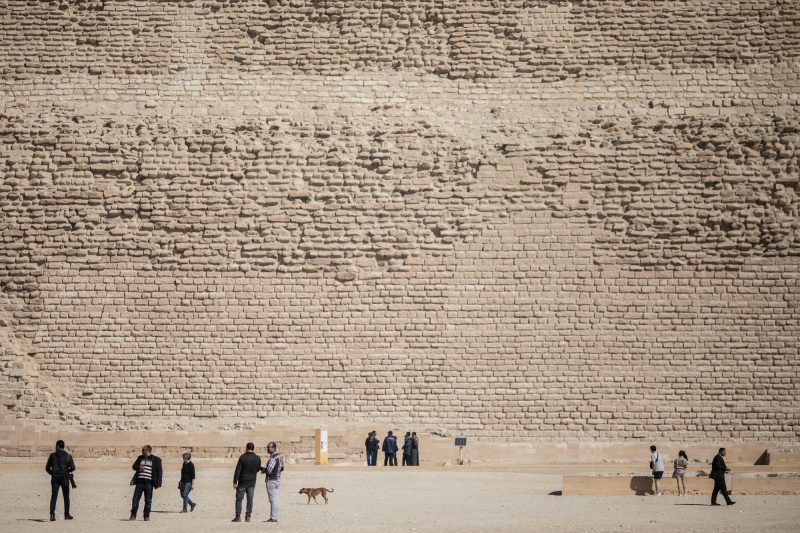
Source: The New York Times
The limestone bricks also distinguished it. About 11.6 million cubic feet of stone and clay were used. Before this, buildings were made from wood, mud brick, and reeds.
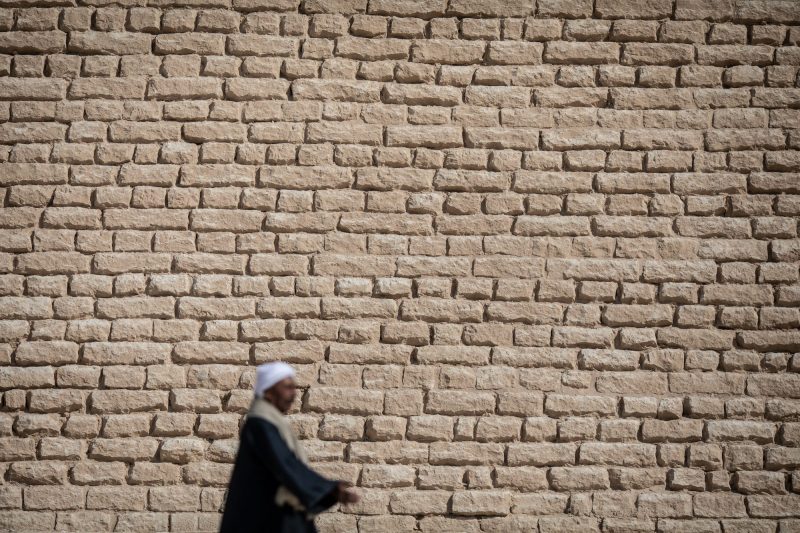
Sources: The Guardian, LiveScience
In 1926, French architect Jean Philippe Lauer was the first person to excavate the pyramid. When the tunnels beneath the pyramid were first explored they were tiled in blue, to symbolize Djoser's afterlife.
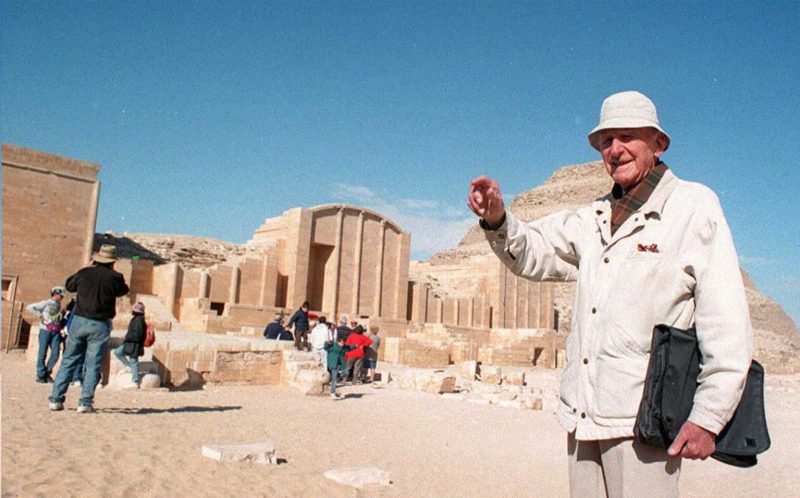
Source: History Revealed, The Metropolitan Museum of Art
Over the centuries, the pyramid slowly crumbled, due to neglect and harsh desert winds. But in 1992, the pyramid dramatically deteriorated after an earthquake weakened its foundations.
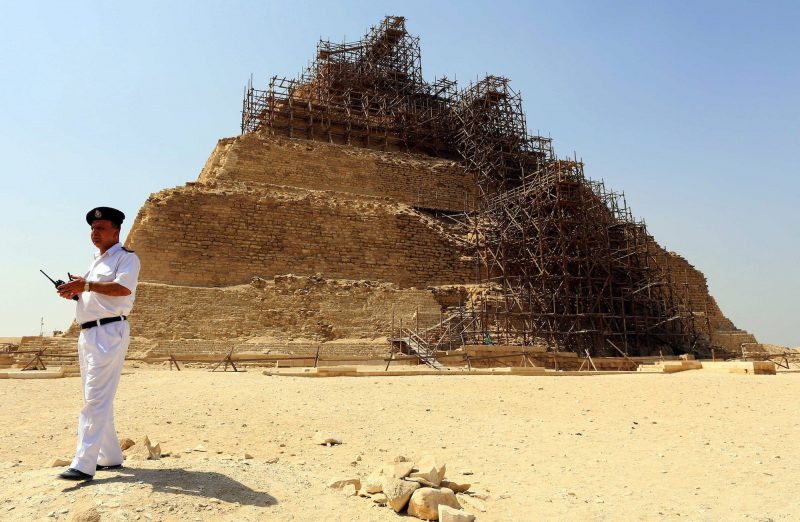
Sources: BBC, Smithsonian
In 2006, the Egyptian government announced it was going to restore it. A British engineering firm was hired, but it wasn't a simple task. To keep the pyramid from collapsing inwards, giant self-inflating airbags filled with liquid were inserted inside.
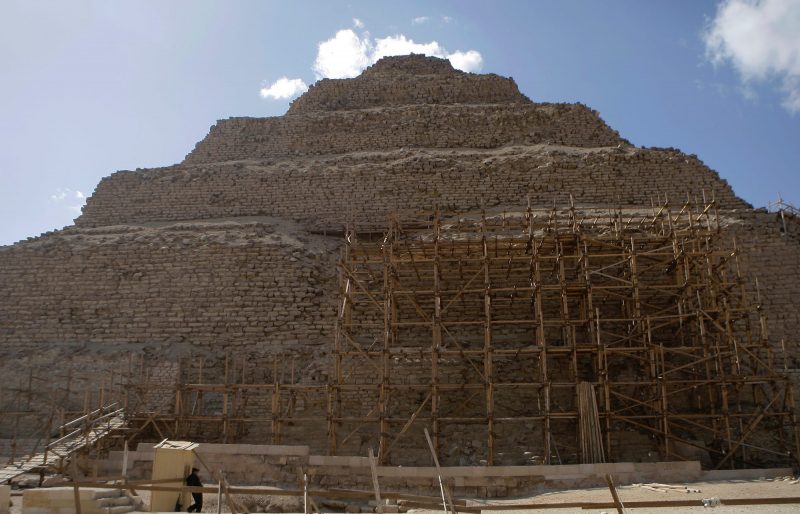
Sources: World Architecture News, Egyptian Streets, BBC, Reuters, Daily Mail
They had been developed by Peter James, a structural engineer, who first designed the airbags to absorb explosions while defusing bombs in Afghanistan.

Sources: World Architecture News, Egyptian Streets, BBC, Reuters
To keep the pyramid together, steel rods were threaded through the steps diagonally in a way to ensure they weren't visible.
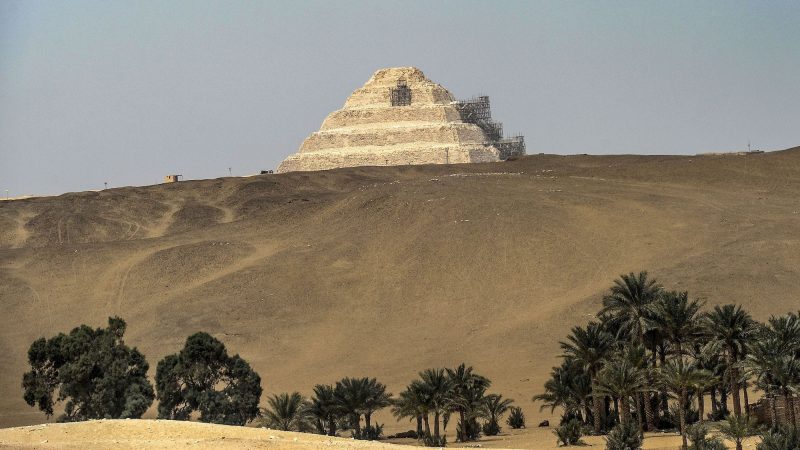
Source: BBC
Despite the hard work and advanced technology, the restoration was put on hold for nearly two years, from 2011 to the end of 2013, over security concerns. Egypt was enduring uprisings that ended with the country's leader Hosni Mubarak being removed from office.

Source: Reuters
On top of that, controversies marred the rebuild. Different Egyptian NGOs claimed that the company working on its restoration had damaged it. Egypt's former Minister of Antiquities, Mamdouh al-Damati tried to dispel the rumors in 2014.

Sources: Yahoo News, NDTV
UNESCO experts criticized the restoration, so additional work was done that the organization later approved. The restoration was finally finished in 2020. It took 14 years, and cost nearly $6.6 million.
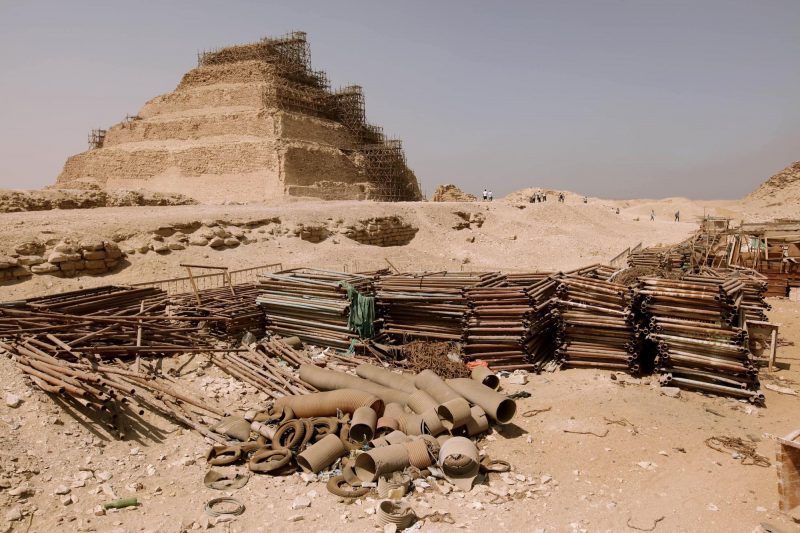
On March 5, Djoser was officially reopened. Dignitaries were served cold juices by bow-tied waiters.
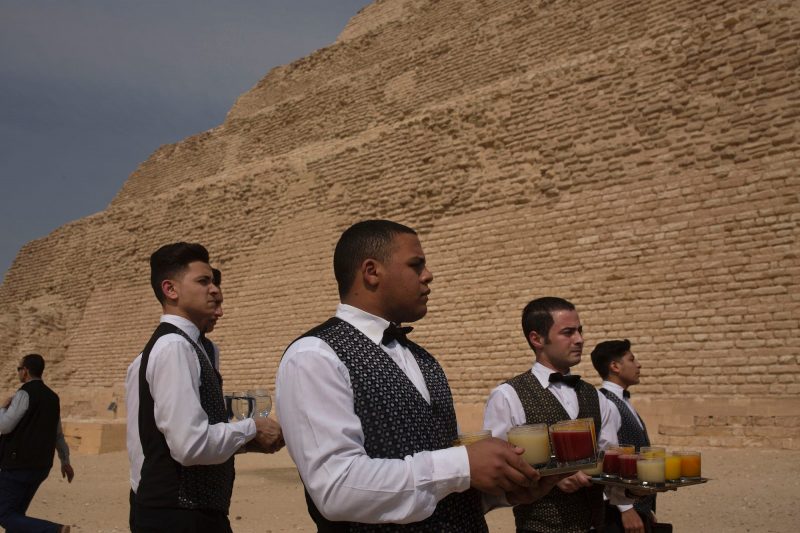
At a press conference, Egyptian Prime Minister Mostafa Madbouli told reporters: "We are working hard to build a new Egypt ... and the restoration of our heritage is at the top of our priorities."

Source: Yahoo News
Tourists and reporters could finally enter the pyramid. Seeing what's hidden from the outside world was vital, according to History Revealed, because the subterranean structure was "a real wonder."
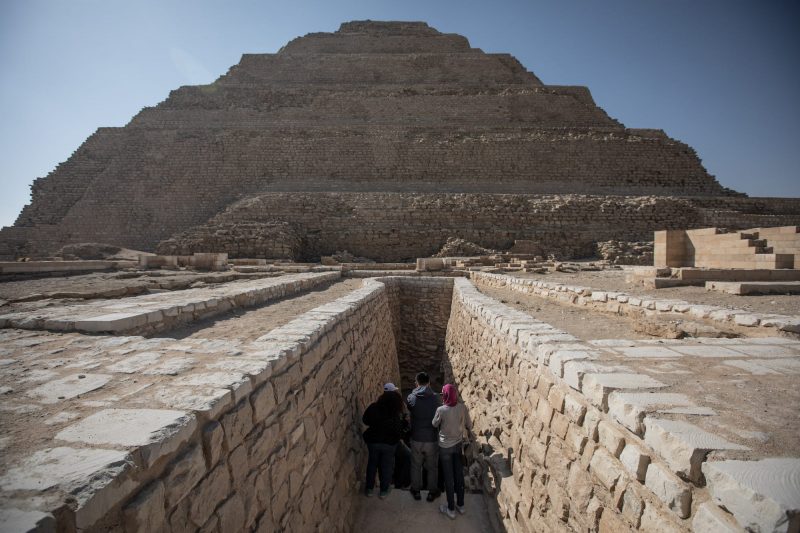
Source: History Revealed
There are just over 3 miles of labyrinths underneath the pyramid. The workers built false doorways, extra chambers, and dead ends to confuse grave robbers.
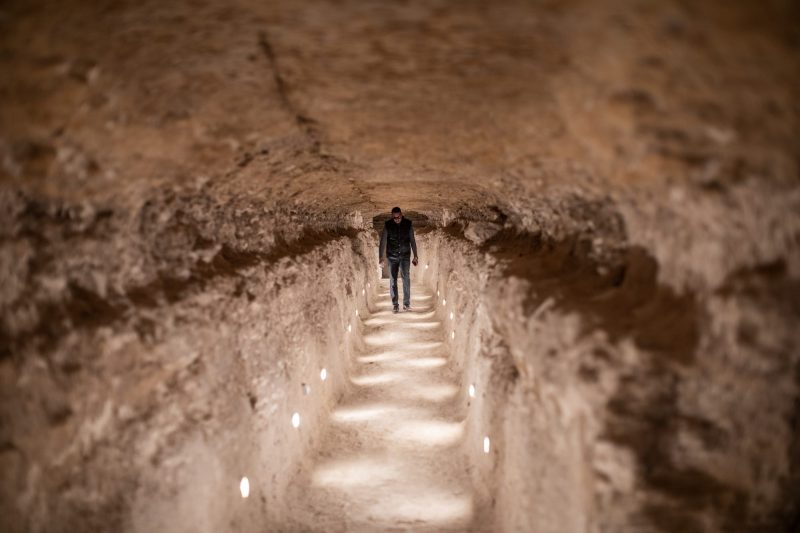
Source: History Revealed
Tourists descended down narrow stairways.
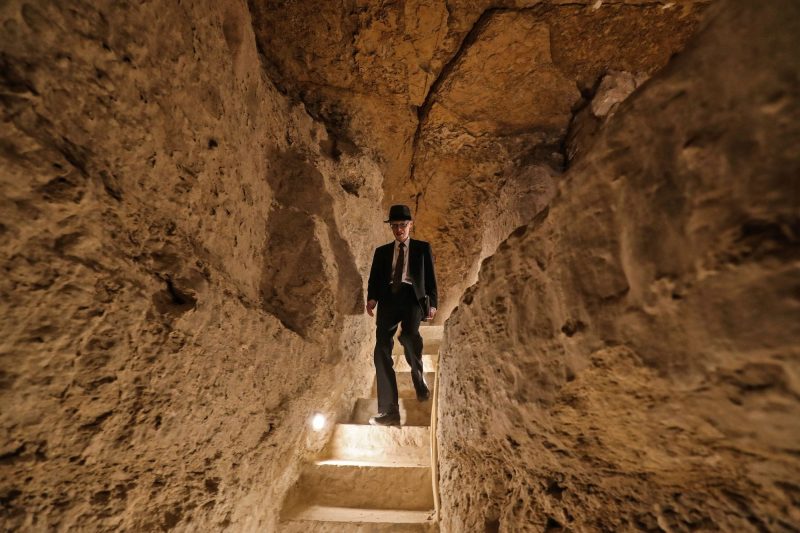
This woman gripped the roof as she descended deeper into the ground.
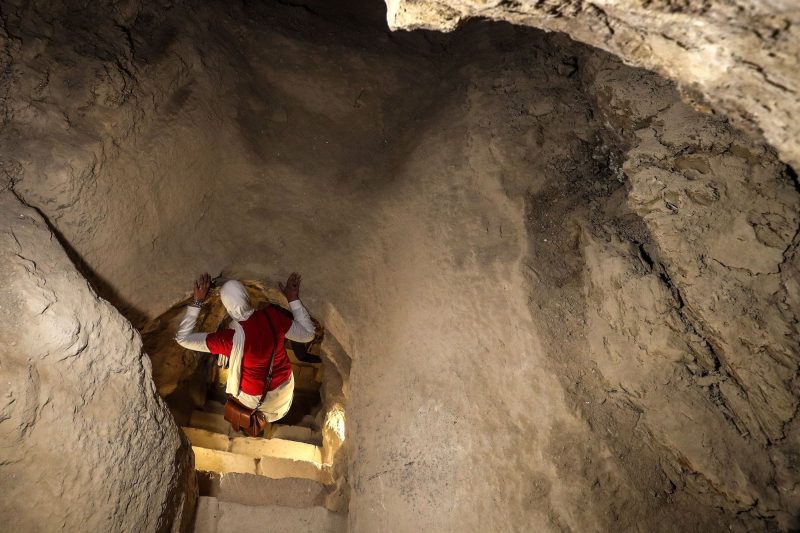
Archaeologist Ragab Dawood gave a tour.
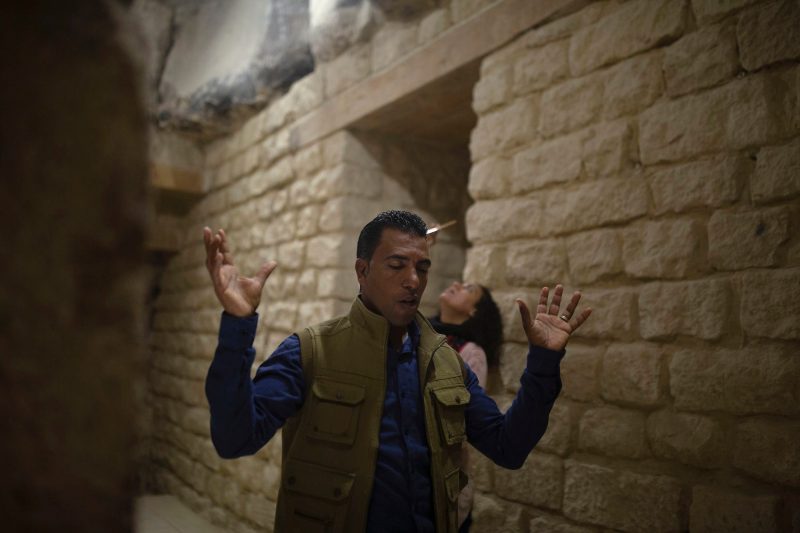
He pointed out ancient stone carvings.
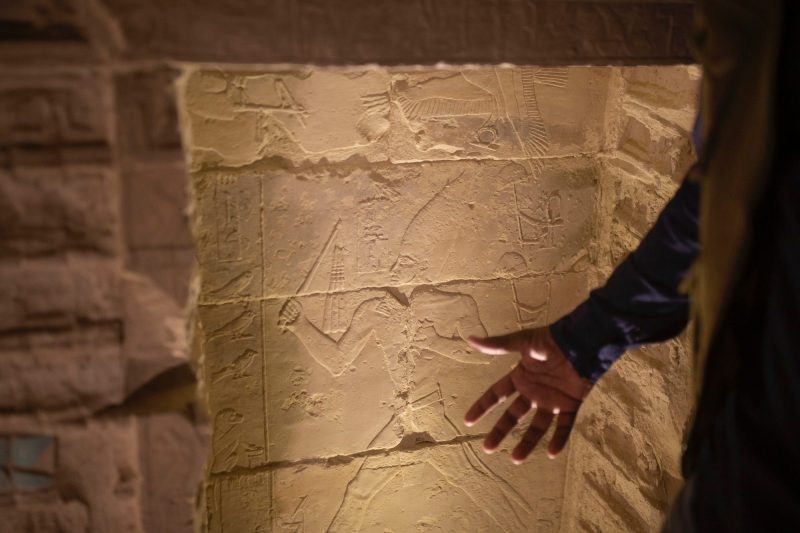
Imhotep's lasting work was a key point of awe. Khaled al-Anany, the Minister of Antiquities and Tourism, said at the press conference, "We are in awe as to how he was able to create this structure, which has remained standing for 4,700 years."

Source: ARY News
The burial chamber and sarcophagus of King Djoser, which is 90 feet below the surface, was open to the public. New lighting had been added during the restoration, but from up above it didn't look too impressive.
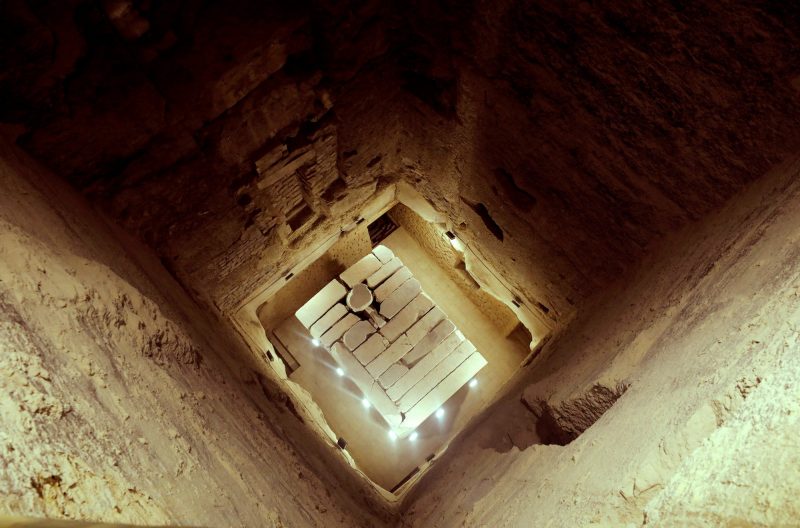
Sources: History Revealed, Egypt Independent
But from the ground, it's more imposing. When Djoser was buried the opening was closed off with a 3.5-ton block of granite.
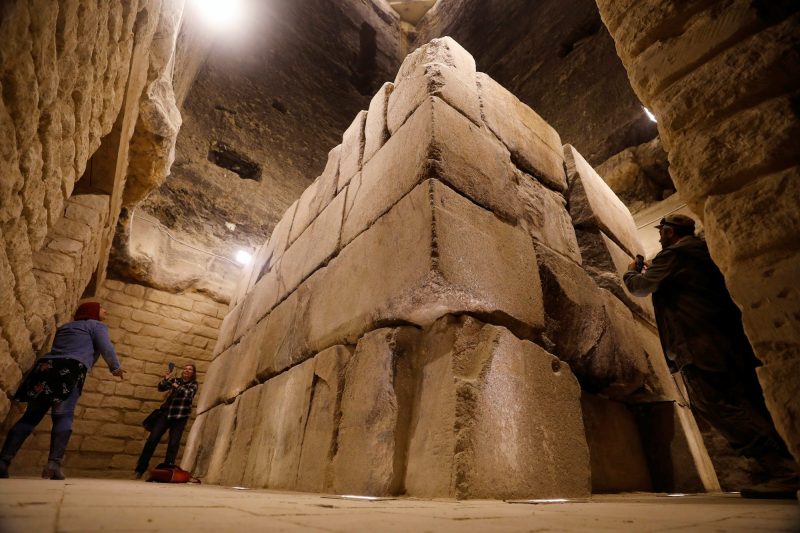
Source: World Architecture News
Tourists also climbed the staggered sides of the pyramid.
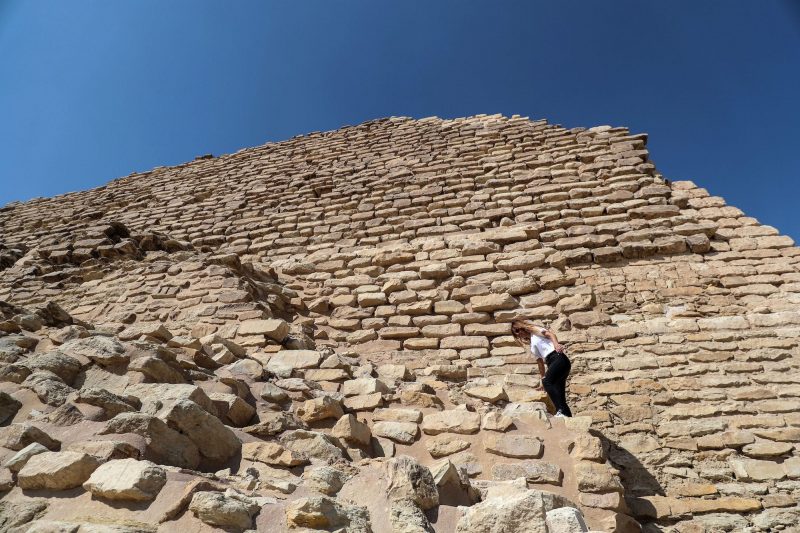
Security was close by.
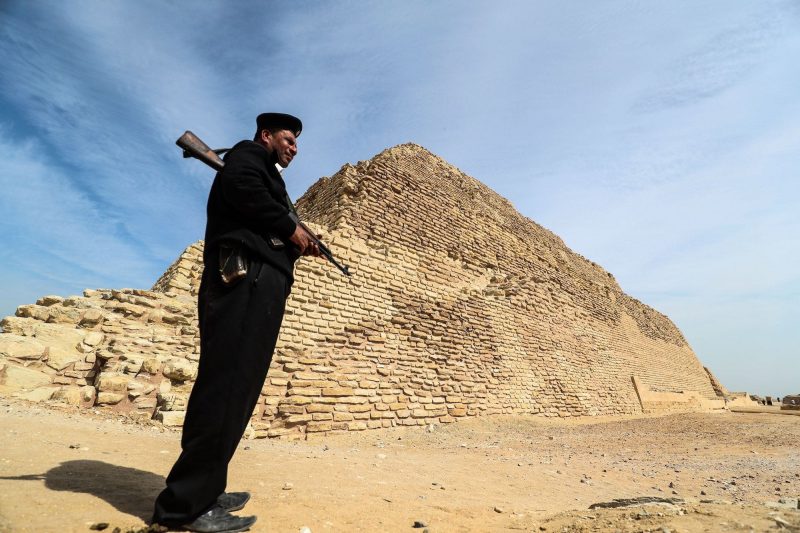
The importance of the reopening was not lost on Egypt's prime minister, who told reporters, "Although of course we are very proud that this is an Egyptian legacy, we also know very well it is world and global heritage that we are very keen to maintain."
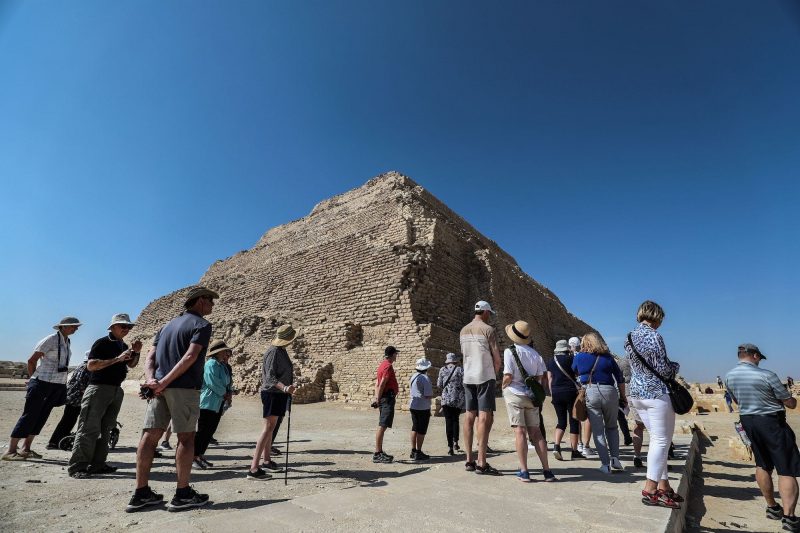
Source: Reuters

